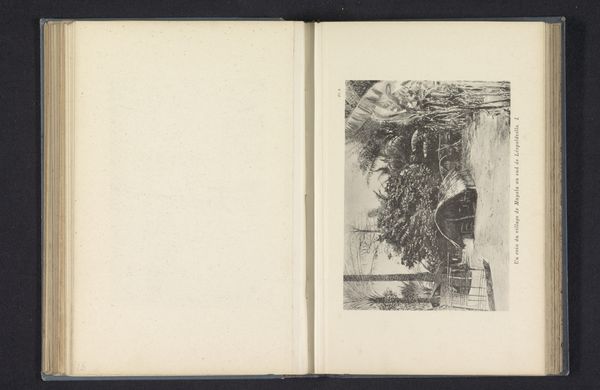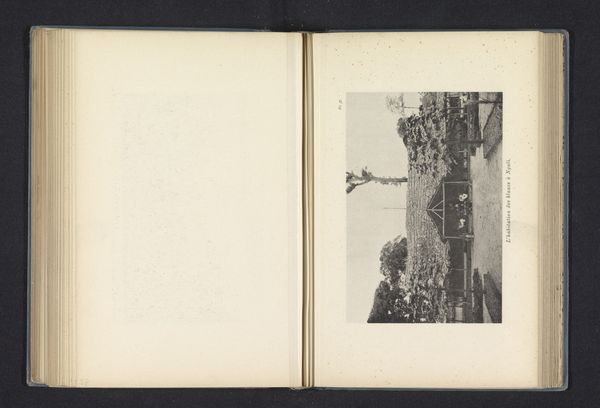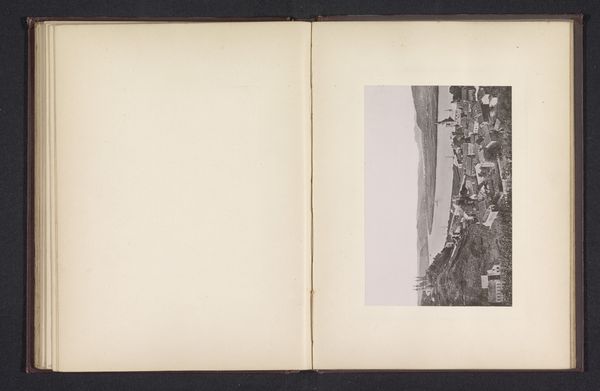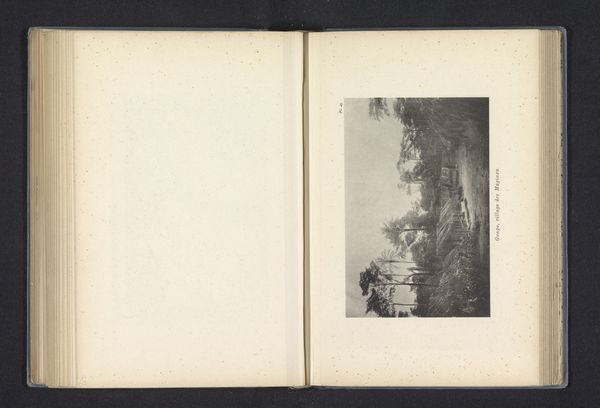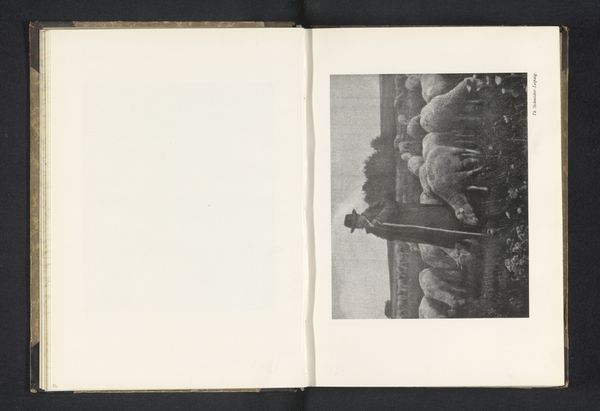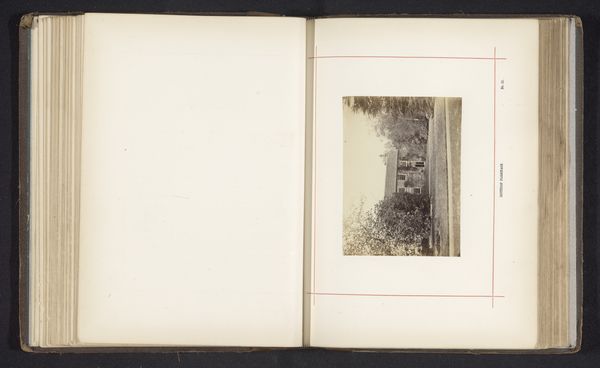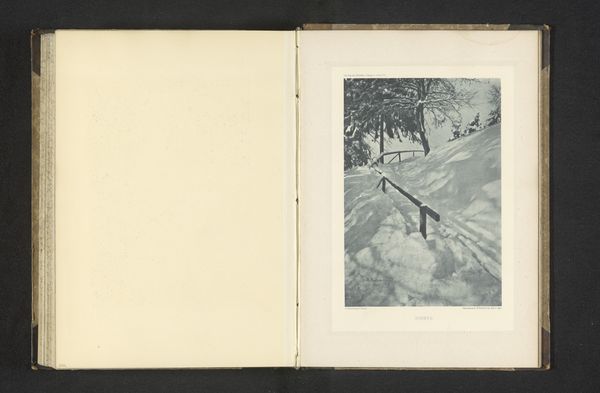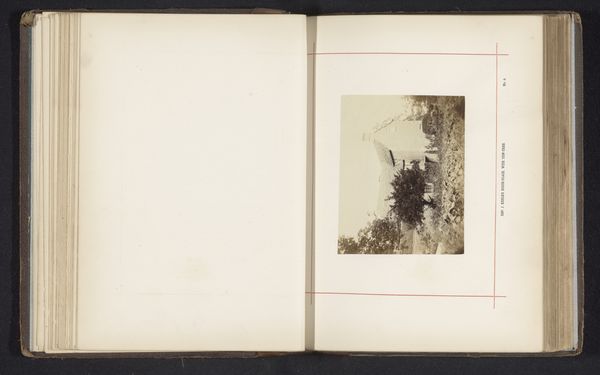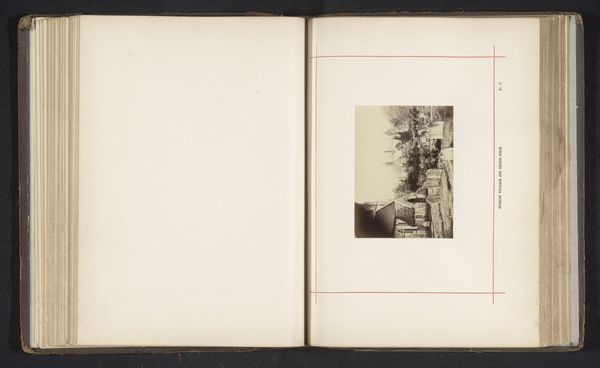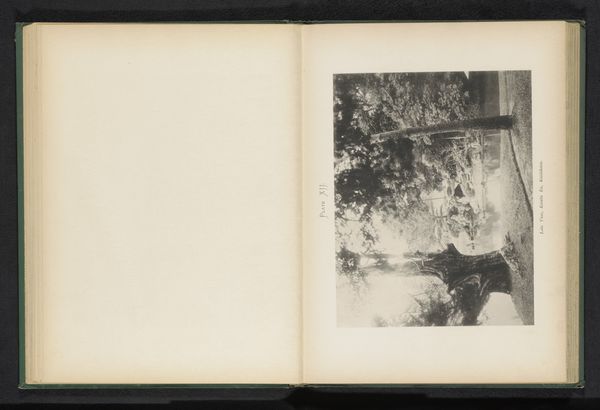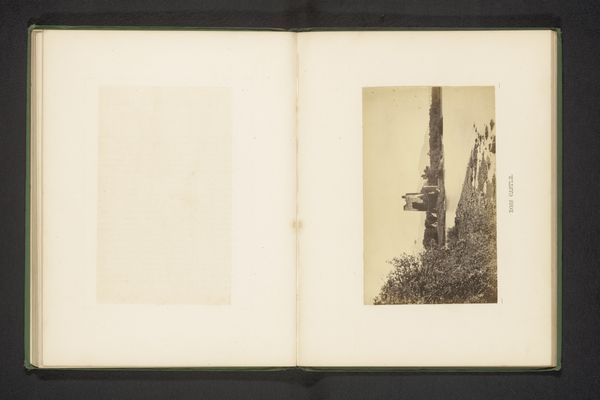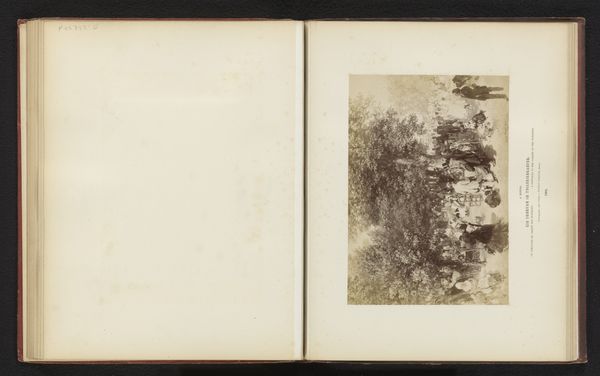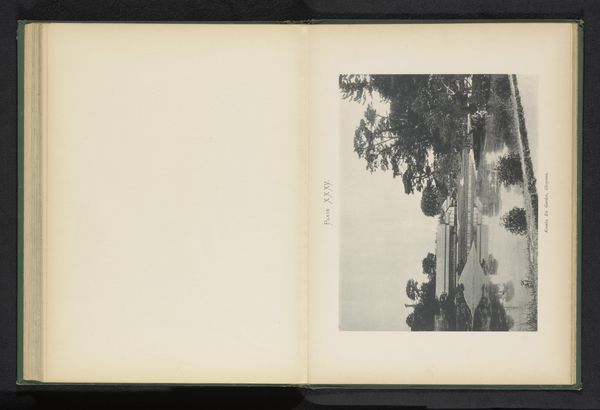
print, photography
#
african-art
#
aged paper
#
homemade paper
#
16_19th-century
# print
#
hand drawn type
#
landscape
#
photography
#
personal sketchbook
#
hand-drawn typeface
#
thick font
#
sketchbook drawing
#
delicate typography
#
sketchbook art
#
realism
#
historical font
Dimensions: height 110 mm, width 162 mm
Copyright: Rijks Museum: Open Domain
Editor: This is "Oever van de Sangha nabij Bonga," or "Banks of the Sangha near Bonga," from 1896 by Franz Thonner. It seems to be a photograph mounted in what looks like a travel journal or sketchbook. The stark contrast between the light paper and the grayscale image gives it a sort of melancholy feel. What strikes you about it? Curator: What I find compelling here is its dual existence. On one hand, we see this serene landscape of the Sangha River in what is now the Central African Republic, likely rendered with an aim toward scientific documentation during a period of intense colonial expansion. On the other, its presentation as an intimate sketchbook entry alters how we perceive it. What power dynamics are at play when someone records an unfamiliar landscape, claiming it in a sense? Editor: That’s a perspective I hadn’t considered. The image initially struck me as purely observational, but framing it as a claim really shifts things. So, how might the socio-political climate of the late 19th century influence our reading of this particular image within this kind of format? Curator: Think about the intended audience for this book. Likely, it was other Europeans back home. Consider also the function of the then emergent medium of photography. It could portray objectivity, realism, yet was manipulated by those in power for a colonialist and even a propaganda agenda. Was this image meant to encourage investment? Bolster national pride? Shape the public perception? It appears as one innocent landscape out of context but is, perhaps, laden with colonial undertones when examined as part of a whole system. Editor: I see what you mean. Viewing it as a document meant to influence opinions rather than a simple snapshot changes my whole understanding. The personal context of the sketchbook almost legitimizes it further in a strange way, creating a false intimacy. Curator: Precisely. And that is how the cultural institutions, and even seemingly harmless things, subtly propagate powerful socio-political positions. Editor: Thanks so much for sharing your expertise. It’s really fascinating how considering the historical and cultural context opens up so many layers of meaning!
Comments
No comments
Be the first to comment and join the conversation on the ultimate creative platform.
